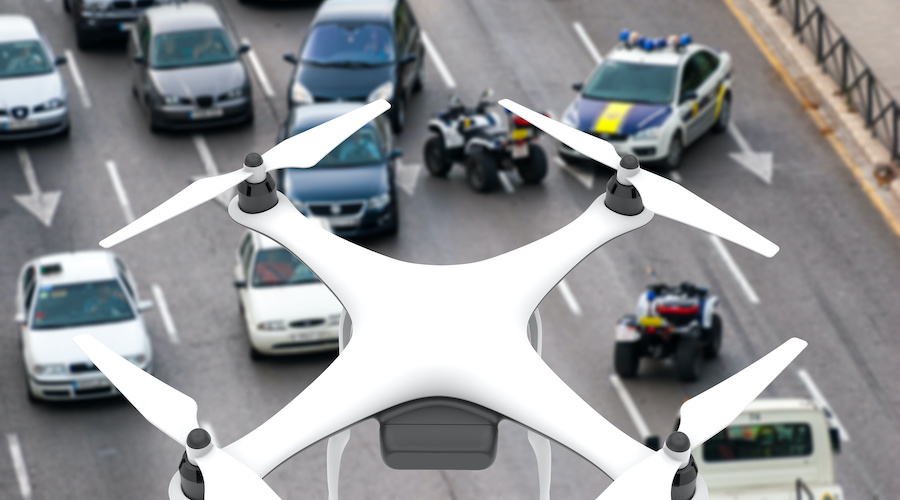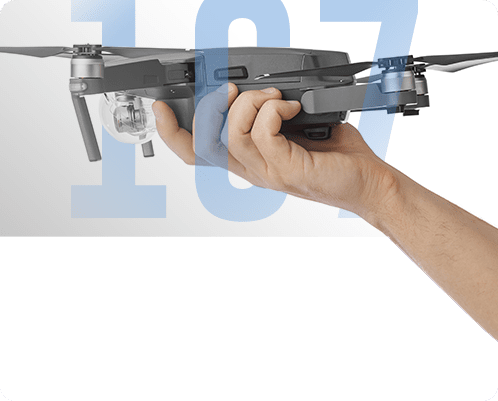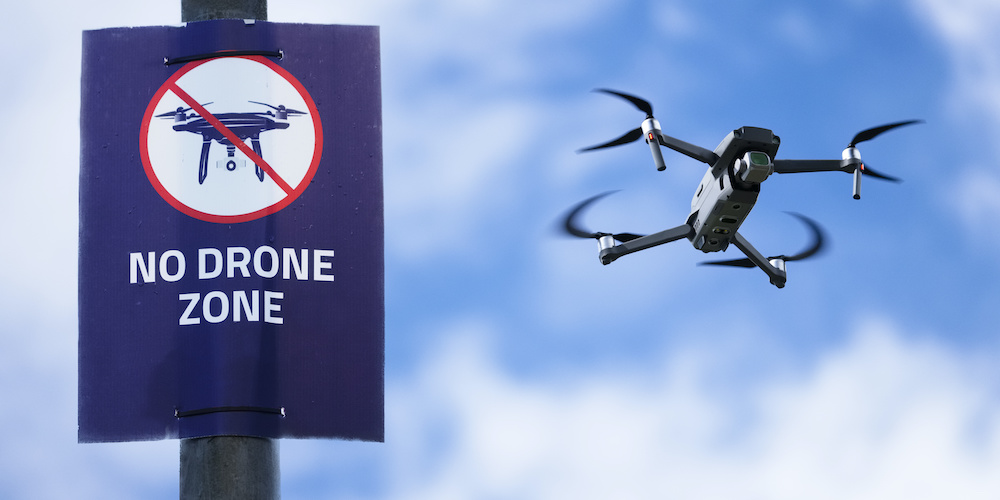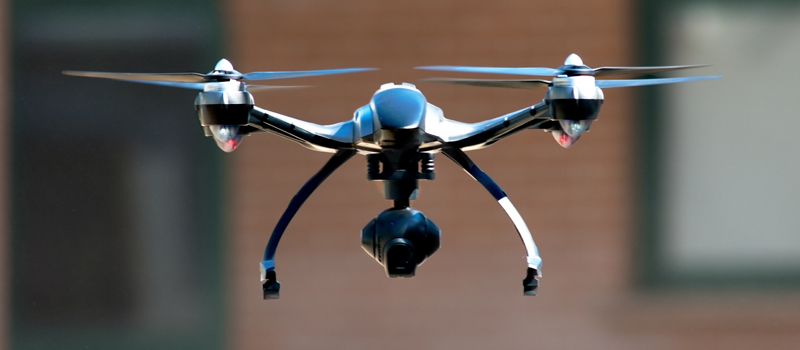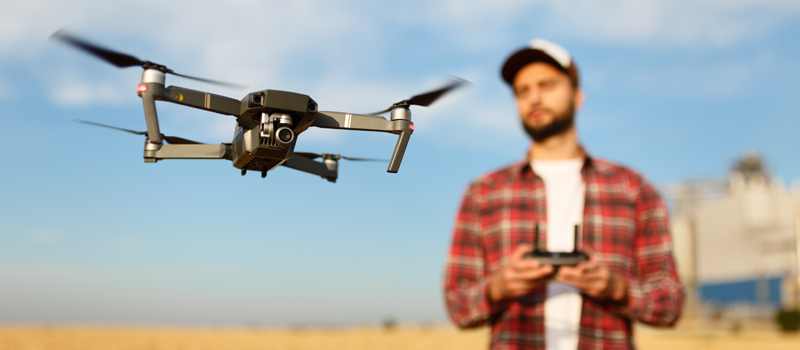-
Part 107 and Public Safety COA Course
-
What is a Part 107 drone license?
-
What are the restrictions of a Part 107 license?
-
The provision for waivers under Part 107
-
What is an FAA COA?
-
The three types of COAs
- Blanket COA
- Jurisdictional COA
- Emergency COA
-
The advantages of a Part 107 drone license over an FAA COA
- Has minimal qualifications
- Shorter and easier application process
- Less stringent reporting requirements
- Establishes minimum proficiency standards
-
The advantages of an FAA COA over a Part 107 drone license
- Grants more drone flight privileges
- Allows for self-certification of other drone pilots
-
Final thoughts
A Part 107 drone license is probably the only government-issued license that most drone pilots know about. However, the world of federal restrictions on drone operations goes a little beyond Part 107. Another method of getting FAA authorization to fly a drone can be secured by getting an FAA Certificate of Waiver of Authorization (COA).
What exactly is the difference between a Part 107 drone license and an FAA COA? Is getting an FAA COA an option for the average drone pilot?
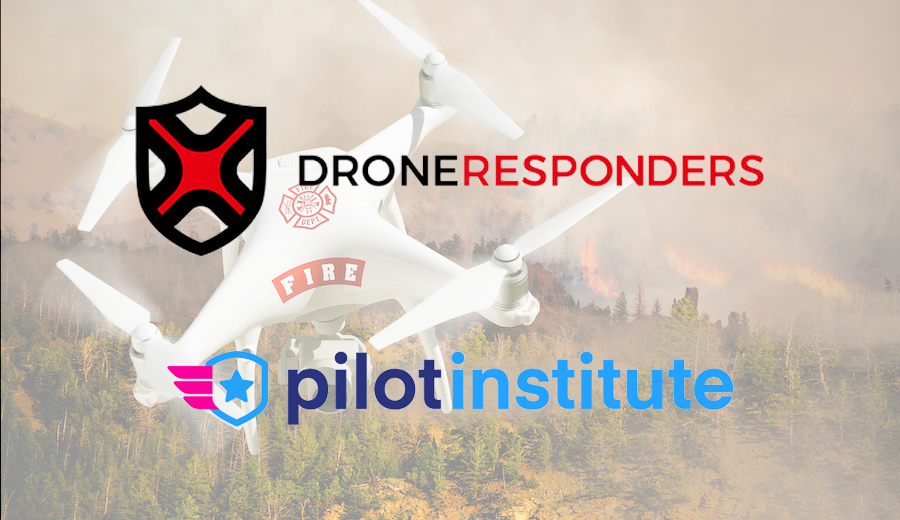
Part 107 and Public Safety COA Course
DRONERESPONDERS, the world’s largest non-profit dedicated to helping public safety drone users and Pilot Institute have partnered to offer the industry’s most comprehensive training.
This first module focuses on passing the FAA’s Part 107 exam and it comes with 15 hours of videos, a cheatsheet, flashcard app, and much more. The second module will dive into Certificate of Authorizations (COAs) and provide you with a roadmap to follow to get your department setup.
What is a Part 107 drone license?
Most drone pilots are more familiar with the Part 107 drone license than an FAA COA, so let’s just discuss the basics of Part 107 quickly. 14 CFR Part 107 provides the legal framework for commercial drone pilots in the US, establishing flight restrictions and a certification process for drone pilots. The Part 107 remote pilot certificate, more commonly known as the drone license, is a requirement for all drone pilots who wish to operate commercially.
The major requirement to be granted a Part 107 drone license is for a drone pilot to take pass a Part 107 knowledge test. The knowledge test covers several topics related to aeronautics such as reading sectional charts, interpreting METAR weather reports, and understanding how weather and loading can affect the flight performance of a drone. As expected, a licensed drone pilot will need to be well-versed with the rules and restrictions included under Part 107.
The Part 107 certification process has proven to be the most convenient and lenient standard ever implemented by the FAA for drone pilots. According to an update released by the FAA way back in mid-2018, they had already hit the 100,000-mark in terms of the number of licensed drone pilots. According to industry estimates, Part 107-licensed drone pilots will outnumber instrument-rated pilots of all levels by 2023.
The rapid adoption of the Part 107 certification standards is due in huge part to how quick and easy the process is. With just minimal preparation, a drone pilot can secure a Part 107 drone license within 2 months of application – that includes signing up for the test, taking the test, waiting for the results, and going through TSA screening. The FAA does not require an in-person flight test to get a license, neither is a medical certificate needed as proof of physical and mental fitness.
What are the restrictions of a Part 107 license?
The Part 107 rules provide the legal framework for all of commercial drone flight in the US. As such, it contains a laundry list of flight restrictions. Among the most important restrictions are the following:
- The drone must weigh between 0.55 and 55 lbs., must be registered with the FAA, and marked appropriately with the registration number
- The drone must stay within a maximum altitude of 400 feet AGL, except when flying within 400 feet of a tall structure
- The drone can only fly in Class G or uncontrolled airspace. Drone flight is allowed in controlled airspace but only with the appropriate authorization.
- The drone must remain within visual line of sight of the drone pilot
- The drone cannot fly over people who are not directly participating in the operations and over moving vehicles
- The drone cannot be operated from within a moving vehicle, boat, or aircraft
- The drone can only be operated during daylight or civil twilight (30 minutes before sunrise or after sunset), given that it is equipped with appropriate anti-collision lighting
These restrictions were put in place in the interest of the safety of the national airspace, as well as people and property on the ground who may get injured or damaged. Some professional drone pilots have argued that these rules are too restrictive and have prevented them from taking jobs from clients.
The provision for waivers under Part 107
Anticipating a need to “color outside the lines,” the FAA provides an avenue for Part 107-licensed drone pilots to request for waivers for a selected list of flight restrictions. Waivers are approved on a per-case basis and have to be requested by a party by stating the purpose of their operations, the risks they are anticipating, and the measures they will implement to mitigate said risks.
At the initial phase of implementation of Part 107, the FAA took a relatively stringent approach to approving waiver requests. Most of the requests they granted were for drone flight at night – requests for other provisions stood a very low chance of getting approved.
As the years went on and drone pilots became more experienced, the FAA has seemingly adopted a more relaxed stance towards waiver approval. Provisions that rarely got waived back then – such as flight over people or beyond visual line-of-sight (BVLOS) – became more commonplace.
That said, the waiver approval process has still proven to be a major impediment to professional drone pilots because of the work and time it took. To make a request, drone pilots needed to prepare a highly detailed account of their proposed operations. After submission, the approval process can take several weeks to a few months. For professional drone pilots, the waiver process prevented them from being more agile in how they approached their business.
What is an FAA COA?
From the name itself, the FAA COA sounds like it provides a wider berth of authorization for the drone pilot. In a way, this initial impression somewhat corresponds to the truth.
The FAA COA was a standard that was established long before the Part 107 rules appeared. Granted by the Air Traffic Organization, a Certificate of Waiver or Authorization (COA) was granted upon request by an operator or organization for a specific activity. This meant that each granted COA can be unique and may have provisions that are tailor-made to the needs of the requesting party.
What this means is that a drone pilot with an FAA COA may be allowed to fly under conditions that would otherwise have been restricted under Part 107 rules. This gives COA holders increased flexibility in how they can operate their drones. Depending on the conditions outlined in the COA, a COA-holding drone pilot may be authorized to fly a drone at night, over crowds of people, or in controlled airspace without needing to get a waiver.
Here’s the kicker – the FAA does not grant a COA to just any drone pilot. FAA COAs are typically granted only to government agencies who may need to use drones as part of their routine duties. These agencies can include local law enforcement, firefighters, first responders, public schools, and local municipalities. An FAA COA allows these organizations to respond to situations where they do not have the luxury of time to request a waiver.
The three types of COAs
The Air Traffic Organization grants three types of COAs:
Blanket COA
A Blanket COA is a COA that is not location-bound and allows a drone pilot to exercise their right to fly a drone across vast regions of airspace. However, a Blanket COA is still subject to a few restrictions such as not flying within five miles of a public-use airport without prior authorization and not flying beyond visual line of sight.
Jurisdictional COA
A Jurisdictional COA is a location-bound COA that authorizes the drone pilot to fly within a specified area. Within that area, however, a Jurisdictional COA requires minimal restrictions. A drone pilot with a Jurisdictional COA may be given the privilege to fly their drone in restricted or controlled airspace, over 400 feet AGL, beyond visual line of sight, or during night. In most cases, a Jurisdictional COA will only be granted to a drone pilot or organization if a Blanket COA had already been granted prior. However, there have been more than a few exceptions to this rule.
Emergency COA
As its name implies, an Emergency COA is typically only granted to emergency service organizations or local government units that offer emergency response. They are granted if the drone use for emergency response will require flying in conditions that are not allowed by a previously granted Blanket or Jurisdictional COA. When invoking an Emergency COA due to an emergency event, the FAA has been known to respond to a COA application in as little as 3 hours.
The advantages of a Part 107 drone license over an FAA COA
A brief look at the privileges granted to FAA COA holders might seem tempting for any drone pilot. The ability to fly under normally restricted conditions without having to apply for waivers is a huge benefit for any commercial drone pilot. However, Part 107 also offers a lot of compelling advantages.
Has minimal qualifications
To apply for a Part 107 drone license, you only need to be a US resident, be at least 21 years of age, and can read, write, speak, and understand English. Of course, there’s the whole matter of taking and passing the knowledge test, but it is comforting to know that it doesn’t take much to get your foot in the door.
The FAA COA, on the other hand, is only granted to selected agencies that are connected to the government. This means that you may not even be eligible to apply for an FAA COA, especially if you are flying for profit.
Only operating with a COA will limit types of activities since only flights that fall under “government function” are allowed under COA. If you want to do a demo for an elementary school, that can’t be done under a COA. You will need to do it under Part 107. If you’re getting compensation, like a FEMA contract, that also can’t be done under COA.
Shorter and easier application process
The application process for Part 107 is pretty straightforward. Sign up for the knowledge test, pay the testing fee, take the test on your scheduled appointment, pass the test, wait for the results, and wait for the TSA background check to finish. All in all, the process can take less than a month to a maximum of two months.
The FAA requires no flight tests, letters of intent, data on drone models, or medical certificates from pilots applying for a Part 107 drone license.
On the other hand, the application for an FAA COA can be long and tedious, even for an organization connected with the government or geared towards public safety. It starts with a declaration letter, a formal COA application, details on the proposed operations, and details on the drones that you will be using.
With more details involved, the review process for an FAA COA application is also longer. Based on the experience of several organizations, the approval process for an FAA COA can take anywhere between 60 to 120 days.
Less stringent reporting requirements
Part 107-licensed drone pilots are only required to submit reports to the FAA under very specific circumstances, such as if they get into a drone-related accident or if they have a change in address. Otherwise, the FAA does not require Part 107 pilots to submit any form of regular reports.
In contrast, COA holders are obliged to submit monthly operations reports to the FAA, regardless of if there was an actual operation during the month or now. These reports are quite detailed and must include information on where the operator flew the drone, the total flight hours for the month, which drone was used, the name of the drone operator, and if any damage or malfunctions were experienced. This can be a significant amount of work, even for large organizations.
Establishes minimum proficiency standards
Unlike FAA COAs, Part 107 drone licenses are granted per drone pilot. This means that the FAA has a hand in regulating every single drone pilot that goes through the process. This provides the FAA the means to establish a standard for the minimum level of proficiency that a drone pilot must have before they can be certified. This proficiency standard is the main objective of gatekeeping the Part 107 drone license behind a knowledge test.
Many agencies who use drones, including those who already hold FAA COAs, recognize the value of the proficiency standards that the FAA has maintained with Part 107. For this reason, it is quite common for drone pilots under such agencies to go ahead and get a Part 107 drone license anyway. The lessons learned during the preparation for the knowledge test are much more valuable than the $160 testing fee.
The advantages of an FAA COA over a Part 107 drone license
Despite the difficulty of getting an FAA COA, it remains an important part of the ecosystem of drone regulation. This is especially true of federal government and emergency response agencies, who often have to fly drones in unpredictable conditions.
Grants more drone flight privileges
Every organization that applies for an FAA COA must provide a detailed account of their proposed operations, highlighting the drone flight privileges they require for their normal functions. This allows the Air Traffic Organization to grant privileges that encompass a wider set of flight conditions. Thus, organizations that hold COAs may fly drones in conditions that would normally be restricted, even for drone pilots who hold Part 107 drone licenses.
It’s easy to see how this can be essential for agencies such as law enforcement or emergency response. For the needs of these agencies, the operations of multiple drones by a single operator or the need to fly in controlled or restricted airspace may be essential to their ability to respond to situations on time.
Allows for self-certification of other drone pilots
One of the biggest benefits of getting an FAA COA, especially for organizations that employ a lot of drone pilots, is the privilege for self-certification. This means that any organization has the right to set internal standards for training and certifying their own drone pilots. With self-certification, the organization can design their own training and certification program without having to go through the FAA.
Although self-certification is possible, the FAA is really not in favor of it and it can open your agency to additional and unnecessary liability. If there’s an accident, the FAA will check your training program – and they’ll want to see something better than Part 107.
Final thoughts
By all accounts, the Part 107 rules represent an evolution in the paradigm of drone flight standards. It has provided a convenient way for commercial drone pilots to get certified and has arguably made drone flight safer by subjecting individual drone pilots to a battery of tests and background checks. Although there are still several restrictions built into the Part 107 rules, licensed drone pilots are allowed to request for these to be waived – subject to individual assessment by the FAA.
The FAA COA is an old standard with just the vestiges of usefulness. Though they are still useful for many agencies related to emergency response, it’s not hard to imagine how the Part 107 rules can slowly evolve into a form that overlaps with the privileges of the FAA COA. In some ways, the privilege of FAA COA holders to fly without the usual flight restrictions have already been integrated into the Part 107 rules in the form of waivers.
Moving forward, we expect the Part 107 rules to become the all-encompassing standard for drone flight regulations. The mere fact that Part 107 tests individual drone pilots already makes it a more comprehensive option in terms of pilot education. If the FAA can come up with a way for Part 107 to be more accommodating of the needs of drone pilots, without compromising safety and security, then there will probably no need for multiple drone regulations.
